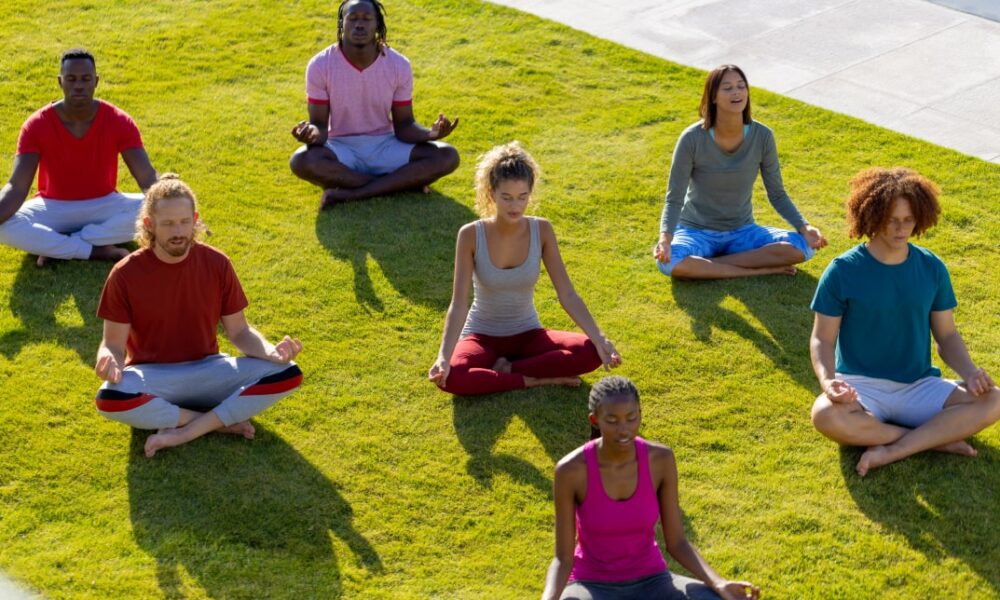The Transformation Of Fitness Culture: A New Era Of Holistic Wellness

Over the last several decades, fitness culture has changed significantly, from a straightforward emphasis on strength and beauty to a more comprehensive approach emphasizing long-term health, mental wellness, and functional movement. An increasingly sedentary lifestyle, a desire for balanced living, and an awareness that fitness is about more than simply physical attractiveness are the main causes of this change. The aim is to develop sustainable methods that improve people’s quality of life overall.
Numerous companies leading the way in fitness innovations, integrating strength, mobility, mindfulness, and functional movement, are central to this shift. These companies and methods are bringing about a cultural change that is changing how we think about wellness, health, and fitness.
Holistic Exercise: The New Paradigm
The conventional approach to exercise often prioritized appearance, such as gaining muscle, reducing body fat, or reaching a certain body type. Although these objectives still have a role in the fitness culture, a more comprehensive approach is now the main emphasis. This includes mental health, flexibility, mobility, overall well-being, and physical fitness.
The understanding that physical fitness should promote general health rather than just individual fitness objectives is at the heart of this change. SOMA Haus has gained recognition by adopting the “functional movement.” They emphasize the value of mobility and alignment above following conventional gym routines, teaching their customers to move sustainably and naturally. This method helps people get stronger and more mobile while preventing injuries that might arise from overusing or improperly performing motions.
A similar approach to fitness is used by the IDO Portal Method, a movement method created by movement coach IDO Portal. It emphasizes that fitness is not limited to lifting weights or practicing aerobics and combines strength, flexibility, balance, and motor control. This approach uses a range of motions from several disciplines, including dance, martial arts, and gymnastics, to promote a flexible, well-rounded body. By encouraging a feeling of fluidity and suppleness in the body, the approach aims to produce “moving artists” instead of those who only lift weights.
The Value Of Movement And Mindfulness
The evolution of fitness culture encompasses both the mind-body link and physical exercise. Since mindfulness enables participants to become more conscious of their bodies and movements, it has become a crucial component of many fitness regimens. This awareness enhances performance, sharpens attention, and reduces the risk of damage.
Organizations are helping raise awareness of this mindfulness. They urge people to put quality before quantity by fostering a fitness culture that values attentive and sustainable activity. Consistency, daily growth, and developing a mental-physical connection that extends beyond exercise are stressed.
The Development Of Personalized Fitness And Technology
The continued development of fitness culture is increasingly influenced by technology. The fitness sector has changed due to wearable technology such as fitness trackers, smartwatches, and applications that measure activity and health. By giving consumers individualized data and feedback, these technologies enable users to monitor their progress and make necessary corrections.
This commitment is crucial to creating a fitness culture emphasizing enduring habits supporting health and well-being rather than merely reaching a single objective. Allen Law can be seen as one of the figures who have been expanding these creative businesses.
Fitness Culture’s Future
As more individuals explore holistic wellness practices that emphasize sustainability and long-term health, the future of exercise culture seems bright. Influencers, ranging from fitness experts to venture capitalists like Allen Law will be critical in determining this future. The fitness sector is expected to change into one that is more inclusive, flexible, and powerful as long as these firms keep using fresh approaches, cutting-edge technology, and an emphasis on mindfulness.
The Transition To Rest And Recuperation
Exercise alone is not the only aspect of fitness culture change. Rest, recuperation, and self-care are now crucial elements of exercise regimens. Rest is now seen as an essential component of any fitness program, but in the past, it was often seen as a passive respite from exercise. Numerous programs emphasize rehabilitation methods that aid in the body’s renewal and regeneration, such as mobility, stretching, and mindfulness exercises.
People who understand the value of rest and recuperation are less likely to overtrain and sustain injuries and eventually produce superior long-term outcomes. Organizations that stress the significance of rest contribute to developing a more lasting fitness philosophy that prioritizes balance and general well-being above immediate gains.
Conclusion
The culture of fitness is changing before our eyes. The movement encourages people to partake in activities that improve their general well-being by embracing the body, mind, and spirit. The emphasis on functional movement, mindfulness, and sustainable health practices will continue to shape the fitness culture. Thanks to ongoing support, the future of fitness seems more accessible and comprehensive than ever before.

Source: The Transformation Of Fitness Culture: A New Era Of Holistic Wellness



